'Vida Americana: Mexican Muralists Remake American Art, 1925-1945' Debuts at The Whitney This Winter
- January 13, 2020 12:10
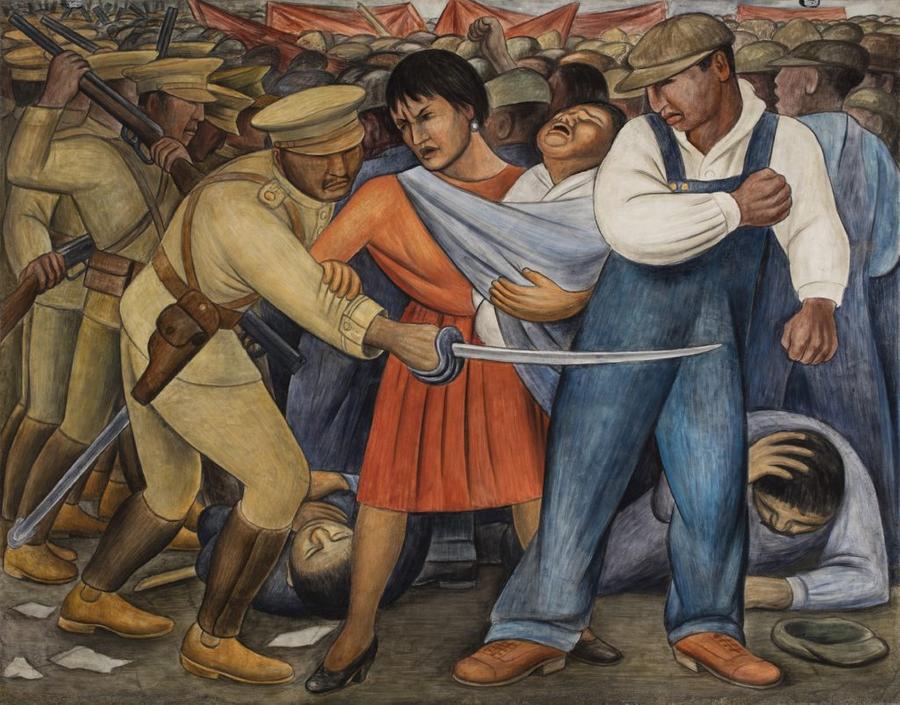
The cultural renaissance that emerged in Mexico in 1920 at the end of that country's revolution dramatically changed art not just in Mexico but also in the United States. Vida Americana: Mexican Muralists Remake American Art, 1925-1945 will explore the profound influence Mexican artists had on the direction American art would take. With approximately 200 works by sixty American and Mexican artists, Vida Americana reorients art history, acknowledging the wide-ranging and profound influence of Mexico's three leading muralists—José Clemente Orozco, Diego Rivera, and David Alfaro Siqueiros—on the style, subject matter, and ideology of art in the United States made between 1925 and 1945.
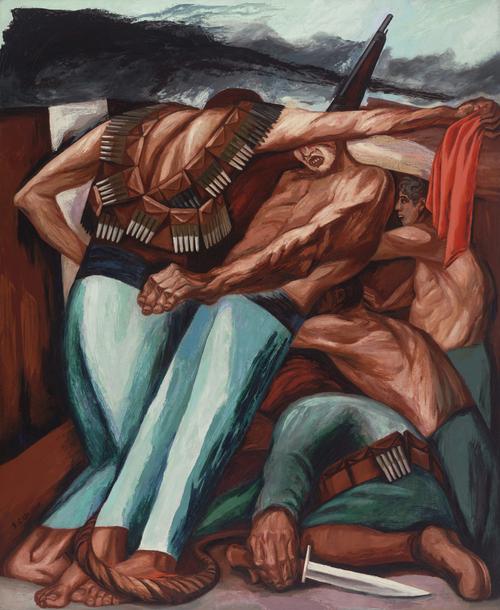
Curated by Barbara Haskell, with Marcela Guerrero, assistant curator; Sarah Humphreville, senior curatorial assistant; and Alana Hernandez, former curatorial project assistant, Vida Americana: Mexican Muralists Remake American Art, 1925-1945 will be on view at the Whitney from February 17 through May 17, 2020 and will travel to the McNay Art Museum in San Antonio, Texas, where it will be on display from June 25 through October 4, 2020.
By presenting the art of the Mexican muralists alongside that of their American contemporaries, Vida Americana reveals the seismic impact of Mexican art, particularly on those looking for inspiration and models beyond European modernism and the School of Paris. At the same time that American artists and their audiences were grappling with the Great Depression and the economic injustices it exposed, the Mexican artists provided a compelling model for portraying social and political subject matter that was relevant to people's lives, thereby establishing a new relationship between art and the public. Works by both well-known and underrecognized American artists will be exhibited, including Thomas Hart Benton, Elizabeth Catlett, Aaron Douglas, Marion
Greenwood, William Gropper, Philip Guston, Eitarö Ishigaki, Jacob Lawrence, Harold Lehman, Fletcher Martin, Isamu Noguchi, Jackson Pollock, Ben Shahn, Thelma Johnson Streat, Charles White, and Hale Woodruff. In addition to Orozco, Rivera, and Siqueiros, other key Mexican artists included in the exhibition include Miguel Covarrubias, Maria Izquierdo, Frida Kahlo, Mardonio Magaäa, Alfredo Ramos Martinez, and Rufino Tamayo.
This historic exhibition will feature works that have not been exhibited in the United States in decades. Two of Rivera's 1932 studies for Man at the Crossroads, his destroyed and infamous Rockefeller Center mural, will be lent by the Museo Anahuacalli in Mexico City. They also will lend Rivera's study from his Portrait of America series (c. 1933). The Museo de Arte Carrillo Gil will lend several key works by both Orozco and Siqueiros that have never been or are rarely seen in the United States, including Orozco's Christ Destroying His Cross (1931), Pancho Villa (1931), and Landscape of Peaks (1943); and Siqueiros's Intertropical (1946), Resurrection (1946), and Cain in the United States (1947). Other important Mexican loans include Siqueiros's Our Present Image (1947) from the Museo de Arte Moderno; and Maria Izquierdo's My Nieces (1940) and Siqueiros's Proletarian Mother (1929) from the Museo Nacional de Arte. Two paintings by Japanese-born artist Eitarö Ishigaki will also be on loan from Japan's Museum of Modern Art in Wakayama.

"The panoramic Mexican murals of the post-revolutionary period depicting national history and everyday life used a pictorial vocabulary that was simultaneously modern and distinctly Mexican. Combined with the radical socialist subject matter of the works the Mexican muralists created while living in the United States, their influence on artists in this country was profound," explained Barbara Haskell, the exhibition's curator. "Largely excluded from the predominant canonical narrative of modern art that emerged in the United States, the muralists' legacy and enduring impact shapes a more expansive vision of modernism. By exploring the transformation in artmaking that occurred in the United States as a result of the Mexican influence, while also examining the effect the U.S. had on the muralists' art, Vida Americana will expand our understanding of the rich cultural exchange between our two countries."

"Vida Americana is an enormously important undertaking for the Whitney and could not be more timely given its entwined aesthetic and political concerns," said Scott Rothkopf, Senior Deputy Director and Nancy and Steve Crown Family Chief Curator. "It not only represents the culmination of nearly a decade of scholarly research and generous international collaboration but also demonstrates our commitment to presenting a more comprehensive and inclusive view of twentieth-century and contemporary art in the United States."
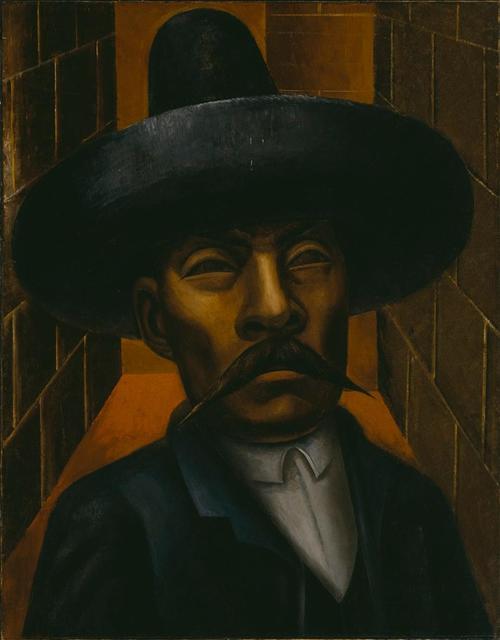
The Whitney Museum's own connection to the Mexican muralists dates back to 1924 when the Museum's founder Gertrude Vanderbilt Whitney presented an exhibition of the work of three Mexican artists—José Clemente Orozco, Luis Hidalgo, and Miguel Covarrubias—at the Whitney Studio Club, organized by artist Alexander Brook. It was Orozco's first exhibition in the United States. A few years later, in 1926, Orozco also showed watercolors from his House of Tears series at the Studio Club; and the following year Juliana Force, Mrs. Whitney's executive assistant and future director of the Whitney Museum, provided critical support for Orozco at a time when he desperately needed it by acquiring ten of his drawings. The Mexican muralists had a profound influence on many artists who were mainstays of the Studio Club, and eventually the Whitney Museum, including several American artists featured in Vida Americana, such as Thomas Hart Benton, William Gropper, Isamu Noguchi, and Ben Shahn.
Comprised of paintings, portable frescoes, films, sculptures, prints, photographs, and drawings, as well as reproductions of in-situ murals, Vida Americana will be divided into nine thematic sections and will occupy the entirety of the Whitney's fifth-floor Neil Bluhm Family Galleries. This unprecedented installation, and the catalogue that accompanies it, will provide the first opportunity to reconsider this cultural history, revealing the immense influence of Mexican artists on their American counterparts between 1925 and 1945. The following sections comprise the exhibition.
Romantic Nationalism and the Mexican Revolution
In an effort to unify Mexico after ten years of civil war, the country's new government sought to construct a shared understanding of Mexican identity and national history. Central to this was the celebration of rural Mexico's landscape, customs, and people—a sharp repudiation of the veneration of European culture that had existed among Mexico's ruling class before the revolution. Mexican artists began to portray the country's Indigenous and largely agrarian population as symbols of national pride and to depict the people's heroic fight for land reform under Emilio Zapata as a defining myth of post-revolutionary Mexico. Artists visiting from the United States embraced a similar attitude and iconography. From a contemporary perspective, the idealized portraits of Mexico's Indigenous peoples created by both Mexican artists and those visiting from abroad may be seen as having reduced their subjects to stereotypes that reinforced their marginalized status within Eurocentric hierarchies. At the time, however, painters and photographers embraced a romanticized vision of rural Mexico as the embodiment of a simpler, more spiritually authentic way of living in contrast to the alienation and isolation of modern urban and industrial life. This gallery will showcase work by Orozco, Rivera, and Siqueiros, known collectively as "los tres grandes," and their fellow Mexican artists, including Luis Arenal, Lola Alvarez Bravo, Miguel Covarrubias, Maria Izquierdo, Frida Kahlo, Roberto Montenegro, Alfredo Ramos Martinez, and Rufino Tamayo. Examples of similar works by American and European artists, including Howard Cook, Sergei Eisenstein, Tina Modotti, Henrietta Shore, Paul Strand, and Edward Weston, will also appear here.
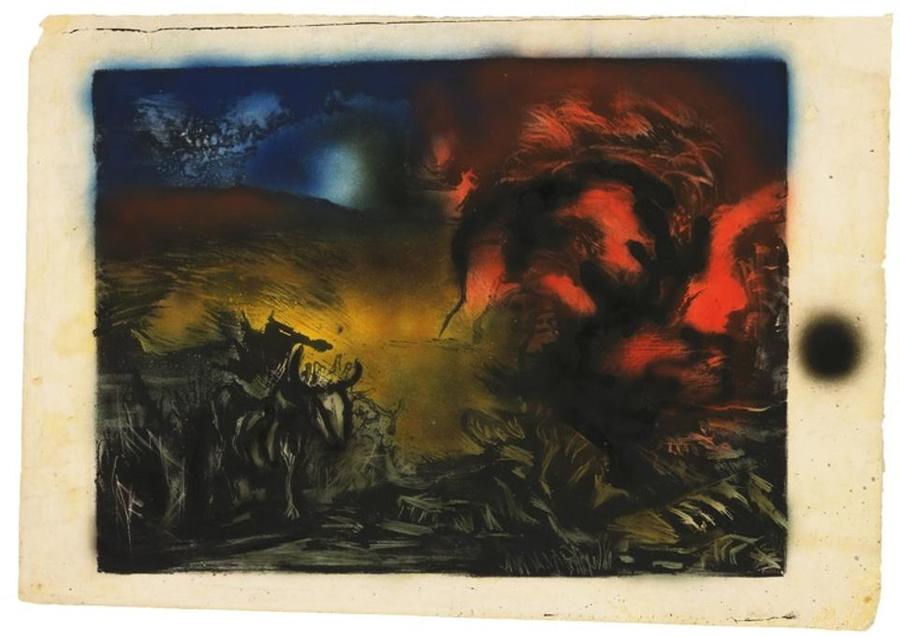
Orozco on the Coasts
José Clemente Orozco was the first of the leading Mexican muralists to come to the United States, arriving in New York in December 1927. The tremendous impact Orozco's work had on American artists such as Everett Gee Jackson, Jacob Lawrence, Jackson Pollock, and Charles White will be examined in this gallery. Artists across the country channeled his visceral brushwork and uncompromising portrayal of struggle and trauma into their own art. In this gallery, several panels from Lawrence's Migration Series (1940-41) will be presented, along with works by Jackson, Pollock, and White. In addition, Orozco's striking first mural in the U.S., Prometheus, painted for the Frary Dining Hall at Pomona College in California in 1930, will appear in this gallery as a half-scale reproduction.
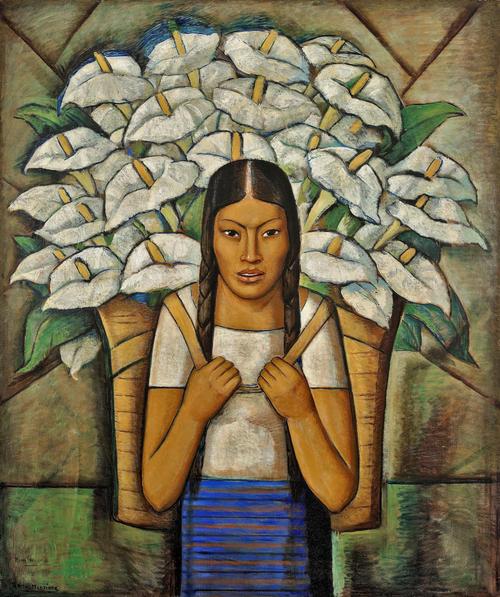
Siqueiros in Los Angeles
David Alfaro Siqueiros was the most politically and artistically radical of the leading Mexican muralists, believing that art must be revolutionary, not only in its political content, but also in its materials and techniques. Of the three murals he made in Los Angeles in 1932, Tropical America has proven the most lasting in its significance. A reproduction of Tropical America will be on view in this gallery, along with work by members of the "Bloc of Mural Painters," as he called his collaborator-assistants, including Luis Arenal, Philip Guston, and Fletcher Martin. These artists were deeply influenced by Siqueiros's aesthetic, especially his union of the sweeping rhythms of Baroque art with the solid, monumental forms of Olmec and Aztec sculpture.
Epic Histories
African American artists responded in particular to the muralists' celebration of the people's fight for emancipation. Inspired by the Mexican muralists to create redemptive narratives of social justice out of their own racial history of oppression, resistance, and liberation, these artists transformed that history into a new collective identity, one that foregrounded the contribution of African Americans to national life. Featuring work by Aaron Douglas, Charles White, and Hale Woodruff, this gallery will highlight how these artists harnessed the national past to create a shared vision of the future. Thomas Hart Benton, whose work will also be displayed in this gallery, likewise celebrated the Mexican muralists, calling them the greatest artists of their time.
Rivera and the New Deal
Diego Rivera came to the United States in 1930 as the most acclaimed artist to work on the Mexican government's public mural program. In Mexico, Rivera had been known as a Marxist whose murals glorified the revolution and condemned capitalist corruption. In the United States, his encounters with modern industry exposed him to the abundance of the country's natural resources and its engineering and industrial achievements. In 1932, Rivera was commissioned to create what became Detroit Industry, a twenty-seven-panel mural cycle filling all four walls of the courtyard of the Detroit Institute of Arts. This monumental work will be presented in this gallery with panoramic photography and digital touchscreens. As well, work by artists across the geographic and political spectrum, such as Charles Henry Alston, Hugo Gellert, Marion Greenwood, William Gropper, Harold Lehman, Ben Shahn, and Thelma Johnson Streat, who adopted Rivera's subject matter and his distinctive style will also appear in these galleries. The section will include studies for murals created in public buildings across the United States under the auspices of the various mural programs established by President Franklin Delano Roosevelt as part of his New Deal.
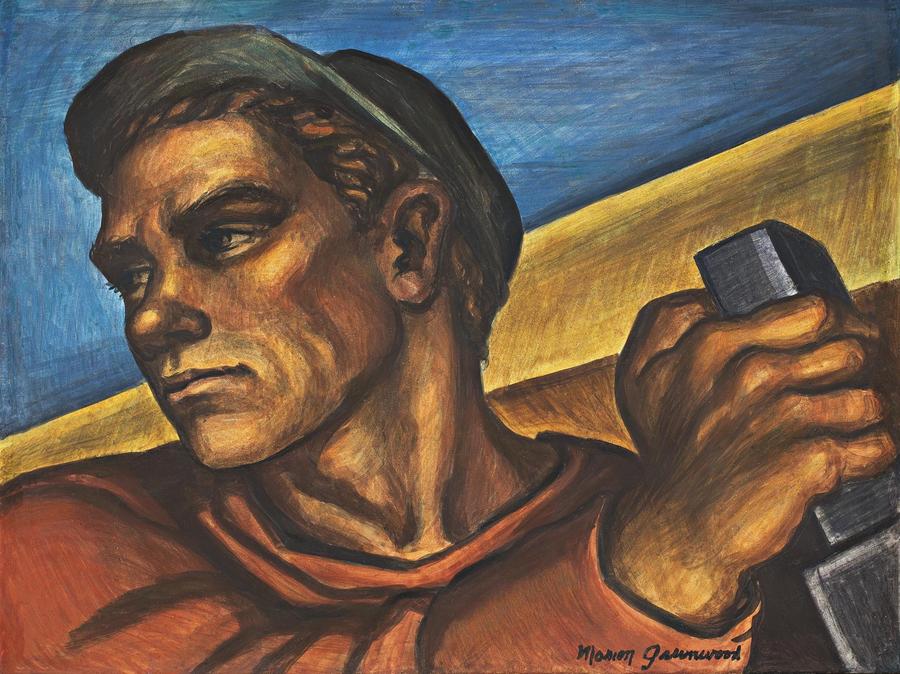
Art as Political Activism
Following the economic and social turmoil that was unleashed by the 1929 stock market crash, artists in larger numbers than ever before resolved to use their art to effect a change, and they often turned for inspiration to the Mexican muralists, whose work was steeped in leftist social and political content. These galleries will explore the work of artists in the United States, such as Thomas Hart Benton, Elizabeth Catlett, Seymour Fogel, Eitarö Ishigaki, Joe Jones, Fletcher Martin, Ben Shahn, Mitchell Siporin, and Hale Woodruff, that tackled subjects such as police brutality against labor union members and the injustice against political radicals and people of color. Artists engaged directly in a campaign against lynching—a form of racialized terror that was used to intimidate and control minorities, primarily African Americans. In early 1935, Walter White, an African American civil rights activist who led the National Association for the Advancement of Colored People (NAACP) for almost a quarter of a century from 1929 to 1955, organized an anti-lynching exhibition, asserting that it was important for artists of all backgrounds to act as allies. With the aim of revealing the violent side of the national experience and provoking outrage that could lead to a more socially and politically just society, these works reflected the political views of their creators.
Abelardo L. Rodriguez Market
The Abelardo L. Rodriguez Market in Mexico City was the most important Mexican urban renewal project of the 1930s. The government envisioned covering it with murals. Rivera was nominally the director of the mural project, but the actual work was overseen by the American-born artist Pablo O'Higgins (née Paul Stevenson), who had settled permanently in Mexico in 1924. Of the ten artists who participated in the project, four were from the United States: O'Higgins, the sisters Marion and Grace Greenwood, and Isamu Noguchi. Encouraged by O'Higgins to depict the exploitation and misery of the workers as straightforwardly as possible, the murals created by these artists emphasized the social and economic injustices suffered by agricultural and urban laborers at the hands of capitalists. In this gallery, a film installation will showcase the functioning market and its murals, focusing in particular on the murals created by the U.S. artists.
Siqueiros and the Experimental Workshop
In this final gallery, several works by American artist Jackson Pollock will be presented alongside those by Siqueiros to demonstrate the impact of Siqueiros's Experimental Workshop on Pollock. Siqueiros established the Experimental Workshop near Union Square in 1936, and under his direction, workshop members experimented with unorthodox materials and new ways of creating art, among them pouring and dripping paint onto canvases tacked to the floor. The workshop had a powerful effect on Pollock, who would adopt the technique of pouring and dripping paint to make art in 1947. But even before that, as will be seen in the works shown in this gallery, Pollock's participation in the workshop alerted him to the possibilities of controlled accidents and unconventional materials and techniques.








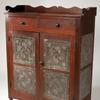


100x100_c.jpg)








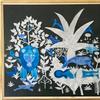
100x100_c.jpg)